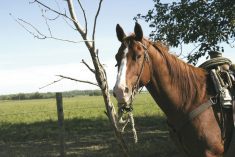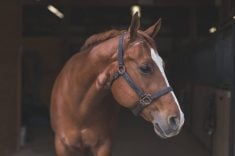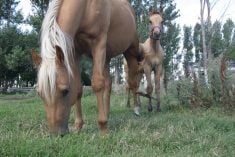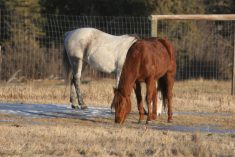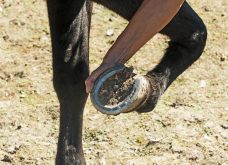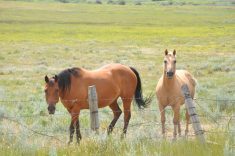The current trend in the horse world when it comes to degenerative joint disease or arthritis is to focus on five main treatment categories, all directly targeting the afflicted joint.
This works for the immediate joint problem, but often overlooks or discounts the holistic nature of the illness.
Understanding the elements underpinning this multi-factored system contributes to reducing the chance of equines developing the disease.
Read Also
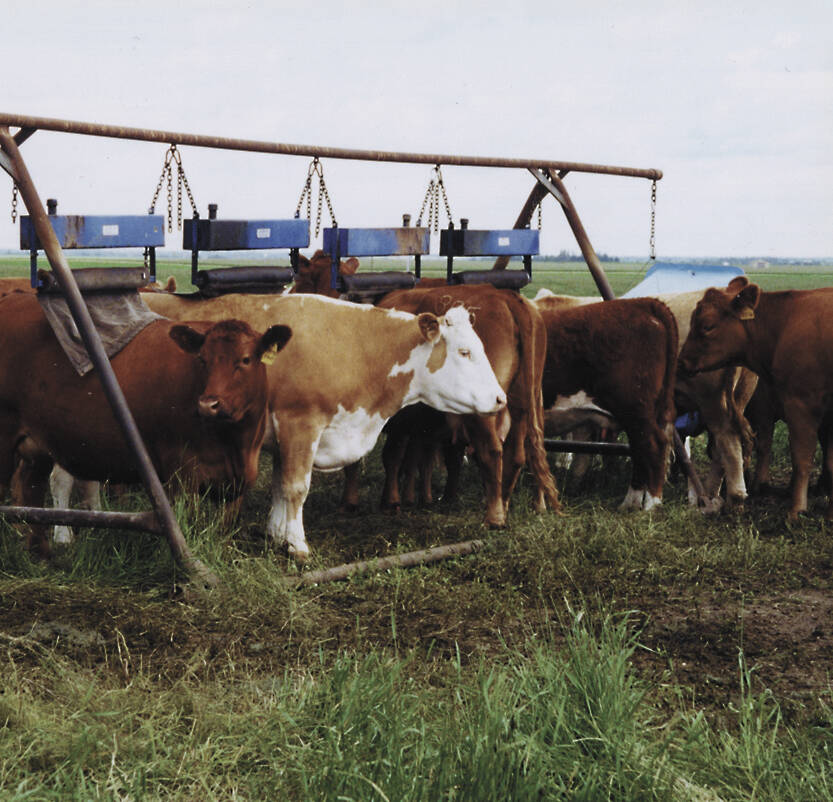
Shifting standards on cattle parasite control
Parasite product resistance has more farmers and veterinarians thinking differently about how to control issues like lice or worms.
Standard treatment
Traditional pharmaceutical therapies for degenerative joint disease turn to non-steroidal anti-inflammatories, corticosteroids, hyaluronic acid, polysulfated glycosaminoglycans and pentosan polysulfate sodium.
A second strategy involves surgery, in which cartilage defects are targeted through arthroscopy and joint resurfacing.
The third category introduces regenerative therapies like interleukin-1 receptors antagonist protein, platelet-rich plasma, stem cells and combinations administered into the joint.
Alternative therapies, such as acupuncture, chiropractic therapy, massage, and various bodywork methods constitute the fourth category. A fifth category tends to be driven by testimonials and involves nutraceuticals and supplements.
Typically, these therapies are only employed once the problem is already noticeable. These horses are already experiencing some degree of degenerative joint disease or discomfort.
These strategies are generally seen as methods to enhance and expedite short-term outcomes. Despite that intention, many treatments and treatment combinations end up being used for extended periods, sometimes for the remaining lifespan of the horse.
Once a joint issue is diagnosed, the success of treatment – whether short-term or longer-term – depends on the unique circumstances of each horse and is influenced by financial considerations.
The whole-horse approach
While the disease might manifest in individual joints, it’s essential to acknowledge that those joints are not isolated within the horse’s body. They are integral to a holistic system. Practices centred around fortifying the entire horse can affect the likelihood of the horse developing degenerative joint disease and the prognosis in the event of a joint injury.
Rest is probably the most under-utilized and under-appreciated therapy method for facilitating the natural healing process after an injury. Proper rest enables the equine body to recover without leaving it vulnerable to recurring issues or the formation of limiting compensation patterns.
In addition, scheduled rest periods are essential in conditioning programs designed to enhance physical and mental performance.
In training and performance phases, skillfully executed warm-ups and cool-downs prepare the horse’s joints and muscles for smooth transitions through heightened activity. Cutting short or eliminating the warm-up and cool-down phases can increase the athletic horse’s vulnerability to various injuries, particularly those affecting the joints.
As performance horses experience fatigue during activity, the chance of a misstep and associated risk of injury rises. This is particularly true for horses carrying excessive loads or navigating challenging footing.
Sport horses frequently undergo repetitive training, focusing on specific movements such as twists, turns, torque and loading that isolate individual joints. This results in cumulative wear and tear, leading to both micro-stresses and micro-traumas on the joints and surrounding tissues.
These can accumulate over time. By broadening the scope of the horse’s conditioning program to include various activities, the risk of repetitive stress injuries can be mitigated.
Sustaining moderate body condition at every stage of the horse’s life will substantially minimize the burden on soft tissues and joint spaces. Even a seemingly small amount of excessive weight, like 50 pounds on a 1,000-pound animal, can exert a noteworthy cumulative impact.
Encouraging natural movement in herd environments fosters blood circulation, joint mobility and the holistic use of the body, releasing patterns of musculoskeletal tension that may become ingrained through training and performance.
Equine performance diets are often heavy on sugars, processed starches and refined vegetable oils high in omega-6 fatty acids. Such a diet can promote inflammation throughout the horse’s body, and this not only makes the horse more susceptible to an injury, but also intensifies the body’s inflammatory responses and hinders the natural healing process.
Last, but certainly not least, when caring for horses under the age of six, the key to joint health lies in prioritizing sensible feeding with forage-based diets, promoting natural movement, and introducing graded training programs.
These measures ready young horses by establishing a robust musculoskeletal foundation, better equipping them to handle the demands of a rigorous performance schedule.
Being aware of and implementing these holistic approaches can significantly contribute to the development and maintenance of healthy joints. These practices are not only applicable but also advantageous and cost-effective across all equine disciplines and performance schedules, particularly when considering long term positive outcomes.




